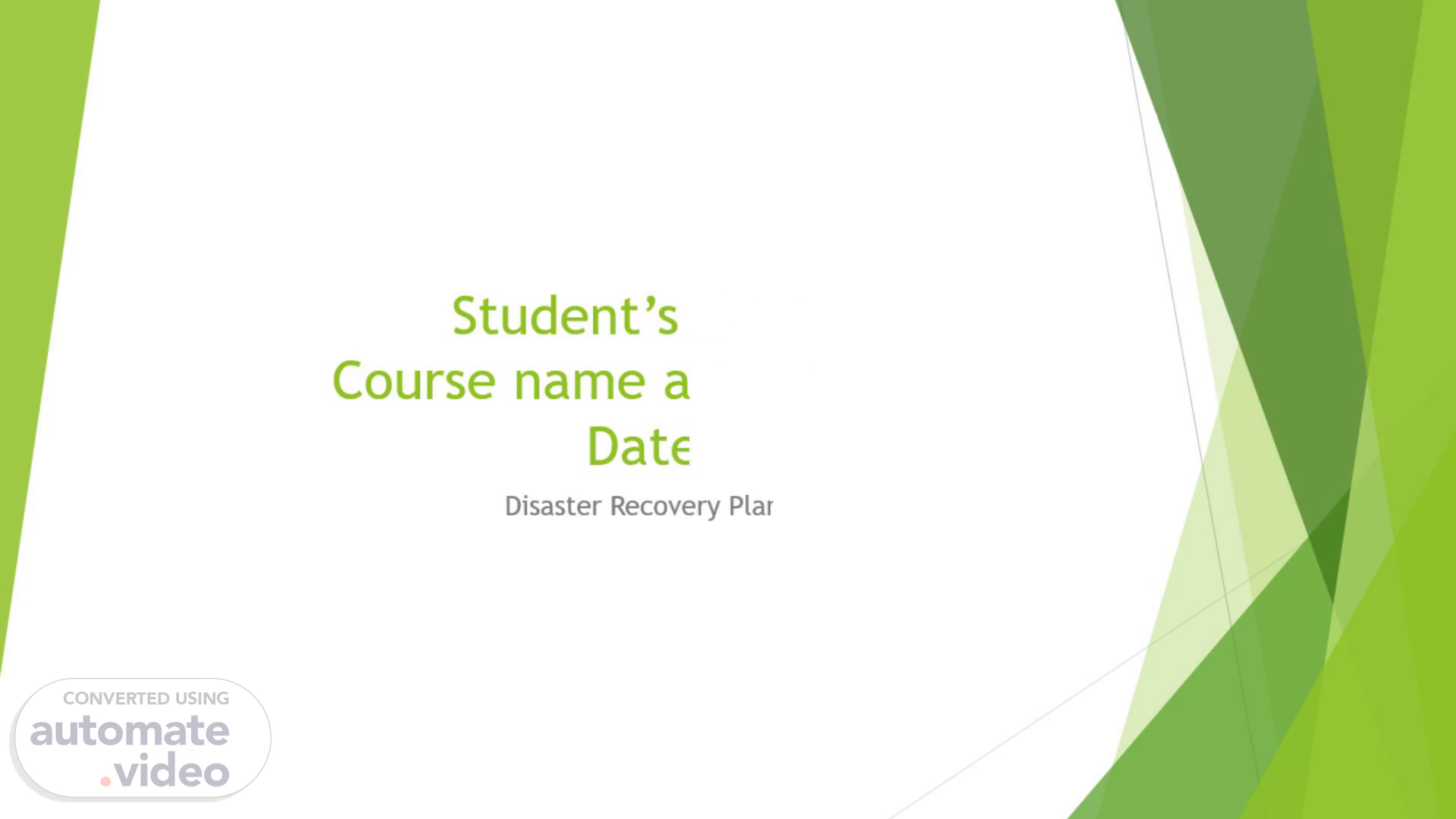
Student's Name Course name and number Date
Scene 1 (0s)
Student’s Name Course name and number Date. Disaster Recovery Plan.
Scene 2 (7s)
Introduction. COVID-19-declared PH emergency in January 2020 Lake Park community experienced devastating effects Disaster recovery plan is essential Outlines how to respond to a disaster Minimize disparities in access to services.
Scene 3 (19s)
Determinants of health and the cultural, social, and economic barriers that impact safety, health, and recovery efforts in the community.
Scene 4 (39s)
Determinants of health and the cultural, social, and economic barriers that impact safety, health, and recovery efforts in the community.
Scene 5 (55s)
Specific, evidence-based strategies to overcome communication barriers and enhance interprofessional collaboration to improve the disaster recovery effort.
Scene 6 (1m 10s)
Specific, evidence-based strategies to overcome communication barriers and enhance interprofessional collaboration to improve the disaster recovery effort.
Scene 7 (1m 24s)
How health and governmental policy impact disaster recovery efforts.
Scene 8 (1m 38s)
How health and governmental policy impact disaster recovery efforts.
Scene 9 (1m 51s)
How the proposed disaster recovery plan will lessen health disparities and improve access to community services.
Scene 10 (2m 6s)
How the proposed disaster recovery plan will lessen health disparities and improve access to community services.
Scene 11 (2m 17s)
Conclusion. Residents of Lake Park greatly impacted by COVID-19 Disaster recovery plan can help them recover from the crisis Barriers to recovery efforts have been addressed Strategies in place to improve communication Health and governmental policies considered.
Scene 12 (2m 30s)
References. Aruru, M., Truong, H. A., & Clark, S. (2021). Pharmacy Emergency Preparedness and Response (PEPR): a proposed framework for expanding pharmacy professionals’ roles and contributions to emergency preparedness and response during the COVID-19 pandemic and beyond. Research in Social and Administrative Pharmacy, 17(1), 1967-1977. https://www.sciencedirect.com/science/article/pii/S1551741120303235 Djalante, R., Shaw, R., & DeWit, A. (2020). Building resilience against biological hazards and pandemics: COVID-19 and its implications for the Sendai Framework. Progress in disaster science, 6, 100080. https://doi.org/10.1016/j.pdisas.2020.100080 Dzigbede, K. D., Gehl, S. B., & Willoughby, K. (2020). Disaster resiliency of US local governments: Insights to strengthen local response and recovery from the COVID‐19 pandemic. Public administration review, 80(4), 634-643. https://doi.org/10.1111/puar.13249 Harkins, C. (2020). Supporting community recovery and resilience in response to the COVID-19 pandemic–a rapid review of evidence. Glasgow Center for Population Health. https://www.gcph.co.uk/assets/0000/7854/COVID19_Comm_Recovery_FINAL.pdf Singu, S., Acharya, A., Challagundla, K., & Byrareddy, S. N. (2020). Impact of social determinants of health on the emerging COVID-19 pandemic in the United States. Frontiers in public health, 8, 406. https://www.frontiersin.org/articles/10.3389/fpubh.2020.00406/full Whitelaw, S., Mamas, M. A., Topol, E., & Van Spall, H. G. (2020). Applications of digital technology in COVID-19 pandemic planning and response. The Lancet Digital Health, 2(8), e435-e440. https://www.thelancet.com/journals/landig/article/PIIS2589-7500(20)30142-4/fulltext.